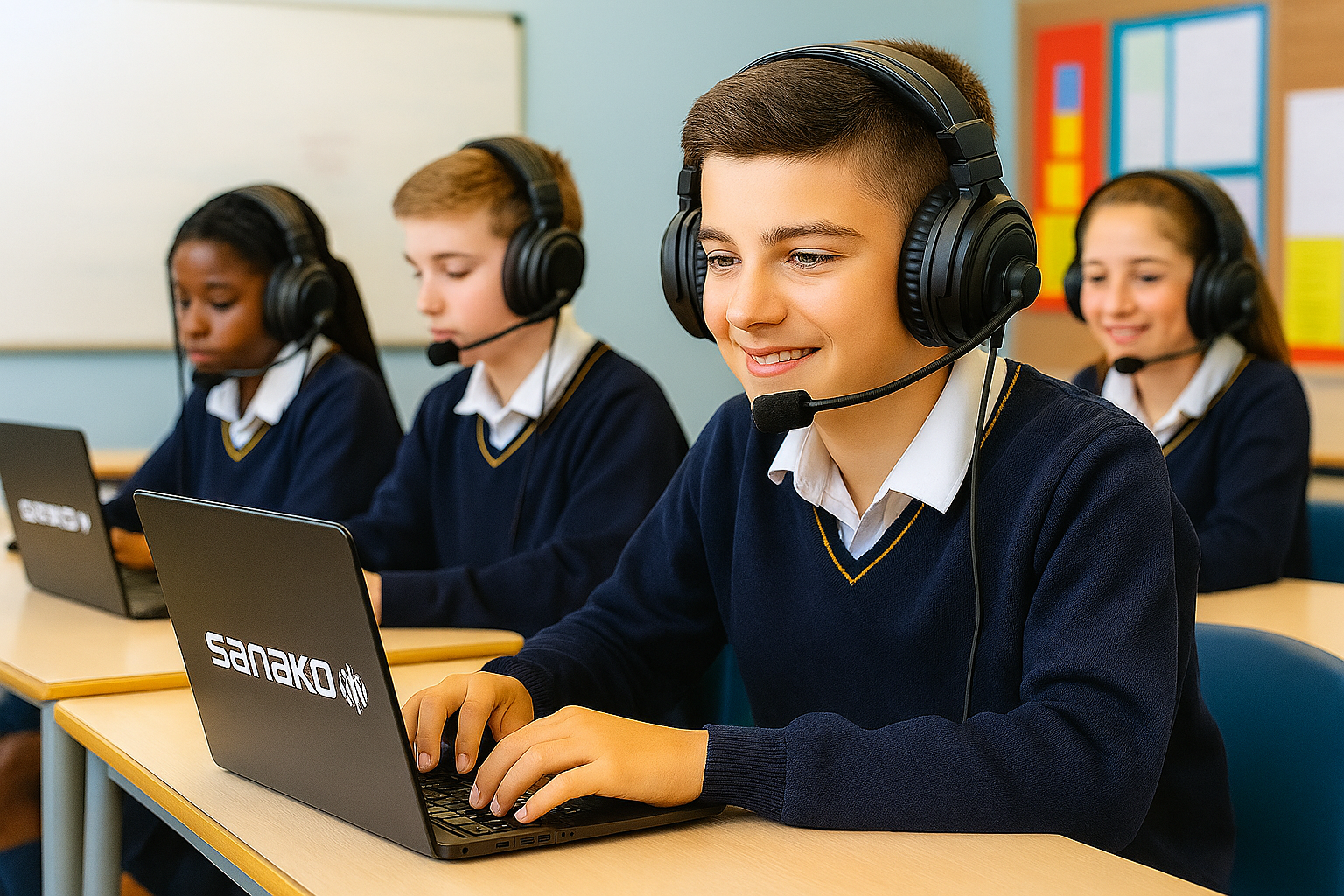Using Sanako Connect in the MFL Classroom A digital tool use backed up by cognitive science

I became Head of the MFL department at Princes Risborough School three years ago. When I arrived at this department, full of talented staff, numbers at KS4 were very low and languages did not enjoy the status they deserved as part of the Ebacc. We engaged in a mission to revamp our curriculum in order to revitalise the perception of languages by students and parents and increase our KS4 uptake.

We have designed a comprehensive curriculum for KS3 that is deeply rooted in communication, cognitive science, and second language acquisition theories. To optimize learning, we've reduced the number of topics per term to one, embracing the "less is more" principle. Our pedagogy now adopts a lexicogrammar approach, specifically aiming to mitigate cognitive overload
A key focus is on providing 95% comprehensible input through listening and reading, allowing students to naturally internalize the language into their long-term memory. This shift has led us to utilize listening for learning rather than for testing. Furthermore, in Years 8 and 9, we now dedicate one language lesson each week to developing independent listening skills.
To Achieve this we have started using Sanako Connect, a unique online language lab solution that offers all the benefits of a traditional language lab without the logistical challenges of a dedicated computer room. Once Sanako Connect is set up for your department, teachers can log in, create classes, upload tasks, and share a classroom link with their classes
Students log in with an invitation link and complete the assignment posted to them, independently and at their own pace. We do this in our own classroom using students’ own devices or Chromebooks with individual headphones for each student.

Students, independently, complete a series of listening and oral tasks aimed to teach listening, embed vocabulary and structures learned in lessons and actively work with the language: listening for learning with 95% comprehensible input.
When creating tasks, Sanako provides a wide range of pre-populated activities for both KS3 and KS4, but it also allows the teacher to create their own resources with the help of AI. During a normal lesson, these are the type of activities I like to create for my students which takes seconds to do:
- Flashcard vocabulary revision, including translation from English into target language, before tackling the listening tasks.
- Dictation activities where teachers record their voice, directly with Sanako or upload an audio file, for example, created by using a text-to-speech tool.
- Finish the sentence tasks, based on specific audio material.
- Match the two halves of a sentence, based on a specific audio file.
- Rearrange the words in a sentence based on specific audio input.
- Fill in the blanks texts based on a video/avatar input, previously created with Vidnoz.
- Pronunciation and reading aloud tasks based on given sentences and texts, where the system will rate students’ pronunciation via different stars with the use of AI.
- Oral activities based on a set of oral questions with the feature of “voice insert” which means the system will create a gap between each question for each student to record their own answer to a question. All these activities can also be set as homework, allowing oral work such as pronunciation and reading aloud tasks, to be set as an assignment

At KS4, there are many prepopulated activities based on the new exam boards for both AQA and Edexcel. The activities (role-plays and photocards) offer the practice of the key vocabulary needed for a particular roleplay or photocard; different listening tasks based on model answers and finally the opportunity for students to record their own versions to the questions or roleplay bullet points.
As students can “talk” all at the same time within their devices, this means that teachers do not need to listen to individual students face to face, saving valuable time and cover requirements to carry out oral tests. A task is sent to the students as an assignment, or series of tasks, students open it, interact with the activity by carrying out listening and oral activities, which are then submitted and checked by the teacher later.
The system can mark many of the activities using AI, but in the case of oral input, the teacher can listen to individual students, mark their work and provide individual oral feedback, which students can listen to, once they log into the system!
This is invaluable for KS4 practice!!

Students love their independent listening and oral sessions during lessons at KS3 and KS4. This approach has had a massive positive impact in the way our students learn and interact with a second language. They feel more confident and learn vocabulary and structures much better, which makes our students experience success and do well in our departmental assessments. This has translated into a big increase in the numbers of students opting to study French and Spanish at KS4, by 400%.
Esmeralda Salgado
Head of MFL,
Princes Risborough School,
Buckinghamshire, UK




